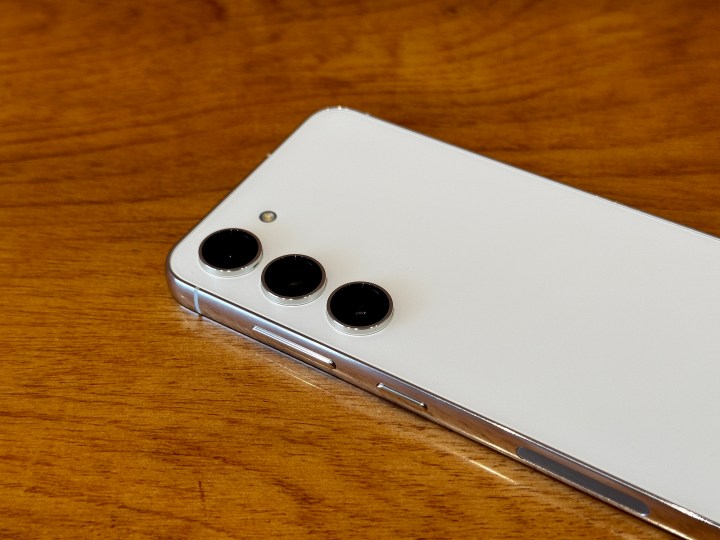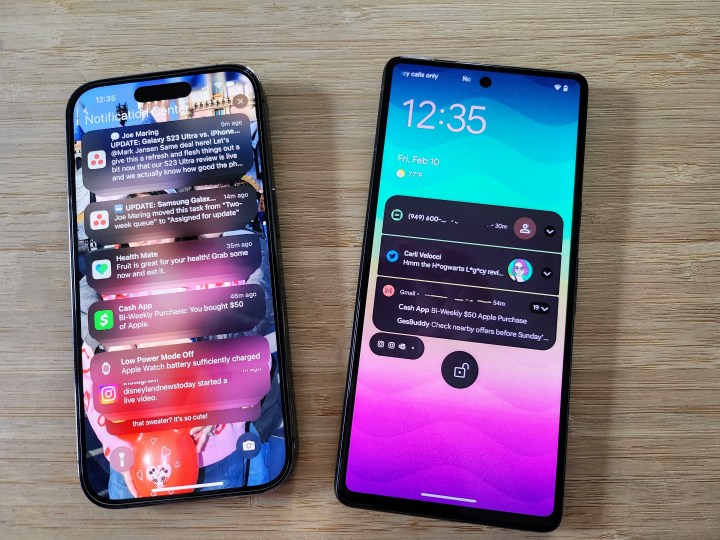I’ve long been an iPhone user and always will be — it’s just what’s in my blood. Even though I’ve been dipping my toes into various Android devices since I started here at Digital Trends, my primary device is still an iPhone 14 Pro. There are a few reasons behind this decision: I’m heavily vested in the Apple ecosystem already, I bought the 1TB model to not worry about storage, and some apps I use don’t have a good enough Android equivalent.
Despite my personal choice of using iOS primarily, the more time I spend with Android, the more I notice things that it does way better than Apple’s iOS. And one of those things is how Android handles volume controls compared to iOS’ rather rudimentary and infuriating system. It may sound like a small thing to home in on, but it’s something I just can’t overlook.
Apple’s iOS volume controls are badly outdated

Let’s take a look at how Apple currently handles volume controls on iOS. On an iPhone, there are two volume buttons on the left side that let you raise or lower the volume. It’s straightforward, and pretty much every phone out there has volume buttons, so that’s to be expected. Press those buttons, and you make the overall volume louder or quieter.
In the Settings app, under Sounds & Haptics, you’ll find the software volume control for ringtone and alert sounds. You can also optionally set it so that the ringtone and alert volume are independently controlled through software so that they are unaffected whenever you use the volume buttons. This way, your ringtone and alert sounds will remain at the volume that you set with the slider, and won’t be raised or lowered with the physical buttons.
Adjusting your volume on the iPhone is cumbersome, to say the least.
If you allow the ringtone and alert volume to be controlled via the buttons, then each time you press them, it will only adjust the volume levels for the ringer and alerts. When this happens, and you want to adjust the volume for other media — like music and videos — you’ll have to do it while the audio is playing. This also includes the volume level for Siri, though you can only adjust that while Siri is active.
Even if you decide to just mute your iPhone, but still have the “change with button” setting for the ringer, you’ll still be adjusting the ringer volume instead of other audio. It’s confusing and doesn’t make much sense. Apple’s iOS technically has independent volume controls for various audio elements, but the method of adjusting volume independently is cumbersome, to say the least.
Android does it so much better

As Android devices keep coming my way, one of the first things I do is always adjust the volume — I’m the kind of person who prefers to have their phone on silent and rely on vibrate when I get an alert. I forgot to do this with an abundance of devices, and each time a notification comes in, I hear a handful of devices chiming at once. Unsurprisingly, that drove me nuts.
But when I pressed those volume buttons, my eyes lit up with excitement at the volume adjuster that popped up on the screen. I see an icon that represents what audio volume I’m adjusting, and then the familiar three-dot button that tells me there’s more. I tap those dots, and the volume pop-up expands to reveal five independent volume sliders (at least on my current Samsung Galaxy S23): system, alerts, Bixby Voice, ringtone, and media.
If someone has used Android for years, this may be old, boring news. But when I saw these volume controls for the first time, I gasped — how easy is this?

Want your ringtone to be loud enough to make sure you don’t miss an important call, but don’t want a million notifications popping off because a post of yours went viral on social media? Hate getting phone calls, but don’t want to miss those Instagram likes and whatnot? Want all sounds off except for music and video when you play them? No sound whatsoever? Just adjust them however you’d like!
When I saw these volume controls for the first time, I gasped — how easy is this?
There aren’t any confusing settings to jump through or a requirement to press the volume button at just the right time. No matter what audio you want to adjust, it’s always a simple press away on Android.
I wish more Android phones had a mute switch like the iPhone, but it’s easy enough to put your device on silent with just Android volume controls anyway. It’s so much easier on
Another trick Apple should steal from Google

The more I use Android devices, the more I notice how poorly some things are done in iOS. The volume controls aren’t the only thing — iOS notifications are still terrible and embarrassing.
It’s been years, and Apple only recently made it so that adjusting volume doesn’t show a heads-up display in the center of your screen (remember that?). So I doubt that there will be a drastic change in how the volume controls work, at least in the short term. At this point, perhaps it would be best if Apple just copied some of the best features of Android, such as the independent volume controls and, of course, notifications.
Editors' Recommendations
- One of the most iconic iPhone accessories is back — and it’s great
- iPhone 16: news, rumored price, release date, and more
- 5 phones you should buy instead of the iPhone 15
- There’s a big problem with the iPhone’s Photos app
- This one thing could make iOS 18 the best iPhone update in years



